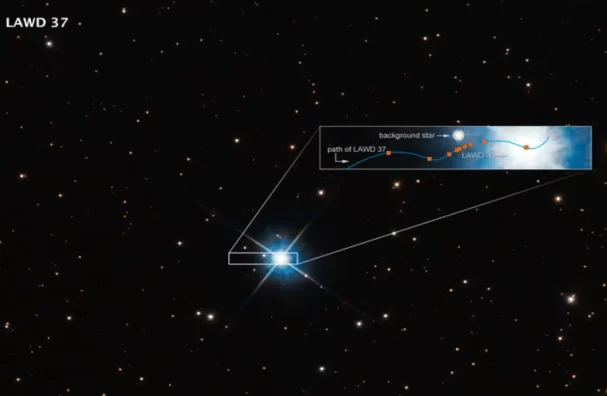
The world of astrophysics continues to thrive, constantly exploring the vast cosmos, its many mysteries, and its intriguing celestial bodies. Among the many fascinating objects in the universe, white dwarfs have always piqued the interest of astronomers worldwide. Recently, a groundbreaking study has shed new light on the evolution of these stellar remnants, courtesy of a concept first proposed by the renowned physicist Albert Einstein.
Albert Einstein, despite having passed away seven decades ago, continues to play a vital role in the progress of science and astronomy. His theories have served as the foundation for countless astronomical discoveries. One such theory, gravitational microlensing, has recently allowed astronomers to successfully observe the light emitted by a dead star or a white dwarf, named LAWD37.
As per Einstein’s theory of general relativity, the gravitational field of a massive compact object bending the light around it when it passes in front of a distant star is referred to as gravitational microlensing. The verification of this theory first happened in 1919 during a solar eclipse, observed by two British astronomers. However, Einstein himself was skeptical about its applicability to stars beyond our solar system.
LAWD37, a white dwarf, offers a potential preview of our Sun’s fate billions of years into the future. A dying star ceases its fuel combustion, casting off its outer material and leaving behind a hot, dense core, transforming matter into a state known as electron-degenerate matter.
Situated 15 light-years away within the Musca constellation, LAWD37 is the remnant of a star that expired around 1.15 billion years ago. Its relatively close proximity to our planet has allowed astronomers to collect abundant data on it, including the spectrum of its light. Despite this wealth of information, one critical element remained elusive until recently: the mass of this white dwarf.
The mass forms an integral part of a star’s lifecycle. Typically, astronomers estimate mass indirectly using robust yet unverified models. In the rare instances where mass can be gauged, the star often has a binary partner. However, for solitary stars like LAWD37, scientists turned to Einstein’s gravitational microlensing concept for assistance.
In 2017, astronomers detected the gravitational microlensing effect for a nearby white dwarf part of a binary system named Stein 2051 b. The recent study, however, has observed this effect in an isolated white dwarf for the first time.
The European Space Agency’s Gaia Telescope and The Hubble Space Telescope played pivotal roles in capturing the microlensing effect in LAWD37. The Gaia satellite’s comprehensive multi-dimensional map of the Milky Way enabled the researchers to predict LAWD37’s movement, guiding the Hubble Telescope to observe the effect at the right time and place in November 2019.
The process was not without challenges. The background star’s light was faint, compelling the astronomers to segregate the lensing signal data from other noise. As Dr. Peter McGill, the lead author, explains, “These events are rare, and the effects are tiny.”
By collecting sufficient lensing signal data, the team measured the light deflection from the background source. This allowed them to determine a gravitational mass for LAWD37, approximately 56 percent of our Sun’s mass.
The precise measurement of LAWD37’s mass enables us to test the mass-radius relationship for white dwarfs, thereby scrutinizing the properties of matter under the extreme conditions inside these dead stars. This breakthrough study, published in the Monthly Notices of the Royal Astronomical Society, continues to affirm Albert Einstein’s enduring legacy in the realm of astrophysics.
